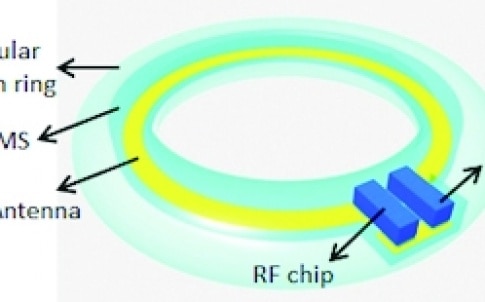According to the university, the sensor would be embedded with an artificial lens during cataract surgery and would detect pressure changes instantaneously, then transmit the data wirelessly using radio frequency waves.
The researchers recently published their results in the Journal of Micromechanics and Microengineering and filed patents on an initial prototype of the pressure-monitoring device.

‘No one has ever put electronics inside the lens of the eye, so this is a little more radical,’ said Karl Böhringer, a UW professor of electrical engineering and of bioengineering. ‘We have shown this is possible in principle. If you can fit this sensor device into an intraocular lens implant during cataract surgery, it won’t require any further surgery for patients.’
The research team wanted to find an easy way to measure eye pressure for management of glaucoma, a group of diseases that damage the eye’s optic nerve and can cause blindness. There are currently two ways to check eye pressure, but both require a visit to the ophthalmologist. At most, patients at risk for glaucoma may only get their pressure checked several times a year, said Tueng Shen, a collaborator and UW professor of ophthalmology.
If ophthalmologists could insert a pressure monitoring system in the eye with an artificial lens during cataract surgery – now a common procedure performed on three million to four million people each year to remove blurry vision or glare caused by a hazy lens – that could save patients from a second surgery and essentially make their replacement lens ‘smarter’ and more functional.
In use, a thin, circular antenna spans the perimeter of the device – roughly tracing a person’s iris – and harnesses enough energy from the surrounding field to power a small pressure sensor chip. The chip communicates with a receiver about any shifts in frequency, which signify a change in pressure. Actual pressure is then calculated and those changes are tracked and recorded in real-time.
The chip’s processing mechanism is very simple, leaving the computational heavy lifting to the nearby receiver, which could be a handheld device or possibly built into a smartphone, Böhringer said in a statement.
The current prototype is larger than it would need to be to fit into an artificial lens, but the research team believes it can be downscaled through more engineering. The team has tested the sensing device embedded in the same flexible silicon material that’s used to create artificial lenses in cataract surgeries.
The team is now working on downscaling the prototype to be tested in an actual artificial lens. Designing a final product that’s affordable for patients is the ultimate goal, researchers said.





April 1886: the Brunkebergs tunnel
First ever example of a ground source heat pump?